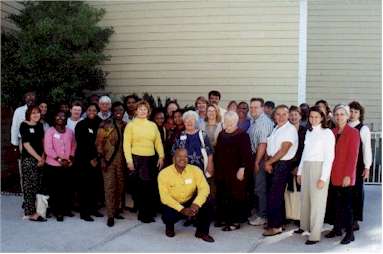|
1.) EVERYONE HAS GIFTS.
With rare exception people can contribute and want to contribute.
Gifts must be discovered. Gift giving opportunities must be offered. Strong communities
know they need everyone. There is unrecognized
capacity and assets in every community. Find it.
2.) RELATIONSHIPS BUILD A COMMUNITY.
See them, make them, and utilize them. An intentional effort to build and nourish relationships is the
core of ABCD and of all community building.
3.) CITIZENS AT THE CENTER
can engage the wider community. People in leadership in everyday life
(associations, congregations, neighborhoods, and local business) must be at the center of
community initiatives rather than just helping
agency leaders. It is essential to engage the wider community as actors (citizens) not just as
recipients of services (clients).
4.) LEADERS INVOLVE OTHERS AS ACTIVE MEMBERS OF
THE COMMUNITY.
Leaders from the wider community of voluntary associations, congregations,
neighborhoods, local business, can engage others
from their sector. Community building leaders always need to have a constituency of people to
involve. This “following” is based on trust,
influence, and relationship. Strong community leaders invite a growing circle of people to act.
5.) PEOPLE CARE ABOUT SOMETHING.
Agencies and neighborhood groups often complain about apathy.
Apathy is a sign of bad listening. People in communities are motivated to act. The challenge
is to discover their motivation to act.
6.) MOTIVATION TO ACT
must be identified. People who are not paid as staff will only act when it
is very important. People will act on certain themes strongly felt; concerns to address, dreams
to realize, and personal talents to contribute. Every community is filled with invisible
“motivation for action”. Listen for it.
7.) LISTENING CONVERSATION
In 1:1 dialogue or in small group conversations is how to discover
motivation and invite participation. Forms, surveys and asset maps can be useful to guide
intentional listening and relationship building. Mapping is not a substitute for listening and
talking face to face.
8.) ASK, ASK, ASK .
Once a person’s possible ‘gifts to give’ and ‘motivations to act’ are
recognized; an opportunity to act must be offered. Asking and inviting are key community
building actions. “Join us. We need you.” This is the song of community.
9.) ASKING QUESTIONS RATHER THAN GIVING ANSWERS
INVITES STRONGER PARTICIPATION.
People in communities are usually asked to follow outside
expert’s answers for their community problems. Agencies usually ask community members to help
with the agency’s answer. A more powerful way to engage people is to invite communities to address
‘questions’ finding their own answer-- with agencies following to help.
10.) A CITIZEN-CENTERED “inside-out” ORGANIZATION
IS THE KEY TO COMMUNITY ENGAGEMENT.
A “Citizen centered” organization means is one where local people control the organization and set the
organization’s agenda. Community engagement initiatives rarely succeed without residents as
leaders organized to do intentional relationship building. It takes an organization of citizens to
organize a community. It is also very valuable to have a staff person to assist relationship
building as a ‘community organizer’ following the citizen leaders’ agenda.
11.) INSTITUTIONS HAVE REACHED THEIR LIMITS IN
PROBLEM-SOLVING.
All institutions such as government, non profits, and businesses are
stretched thin in their ability to solve community problems. They can not be successful
without engaging the rest of the community in
solutions. We need to be more skillful in wider engagement. Everyone must do their part.
12.) INSTITUTIONS AS SERVANTS
People better than programs engage the wider community. Institutions
of government, non profits, and business can be of invaluable help supporting the work of
citizens’ to engage their fellow community members. Ask people what they need and offer
help. Leaders in institutions have an essential role in community building as they lead by
“stepping back” creating opportunities for citizenship, care, and real democracy.
|
